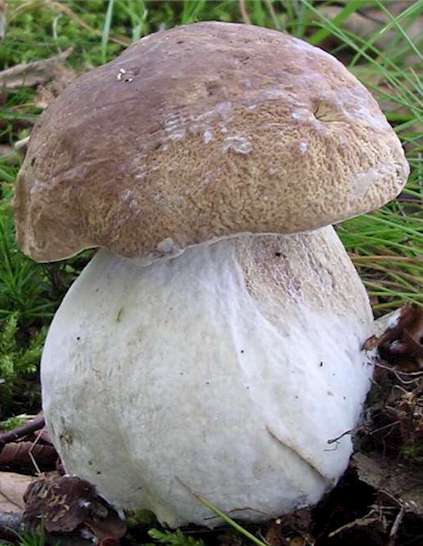..
PROFILES OF FUNGI: BOLETUS AND SIMILAR FUNGI The group of fungi commonly termed the "boletes" produce mushroom-like fruitbodies (basidiocarps) but instead of having gills they have narrow pores on the underside of the cap. The pores are lined with basidia, and at maturity the basidiospores are "popped" a short distance into the pore, and then fall vertically so that they escape from the pores and are dispersed by wind. Almost all of these fungi grow in symbiotic association with trees, forming mycorrhizas that aid the uptake of mineral nutrients from soil. The three main genera of boletes are Boletus, Suillus and Leccinum. These genera often produce large, fleshy fruitbodies. One of the classic examples is Boletus edulis - the highly prized "Cep" or "Penny Button" (see Fig. 1) which is often collected and dried as flavouring for soups in Continental Europe. [But even a relatively young specimen will contain a large number of maggots of the fungus gnat!].
Another Boletus species, Boletus calopus (Figs 2, 3) is usually associated with beech or oak trees. Old specimens of this fungus can be large, with a muddy-brown cap up to 15 cm diameter. The underside of the fruitbody reveals the pale lemon pores and a stout, red, tapering stipe with a reticulate pattern. But one of the most notable features is the ease with which this fungus is bruised and rapidly turns a deep blue colour. Several other Boletus spp. also bruise in this way.
Leccinum species differ in several ways from Boletus spp., despite their overall similarity. They have dry caps, relatively tall stems (stipes), and the stipe is covered with small scales that usually darken with age. Leccinum scabrum, the "Brown Birch Bolete", illustrates these features (Figs 5 and 6 below).
|





